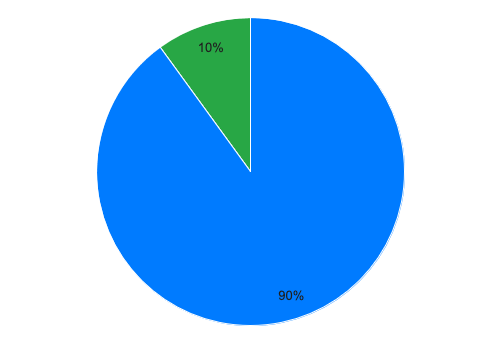Few things hobble businesses quicker than poor decision-making. That’s my I encourage businesses to employ 90/10 strategy for decision-making. It boils down to making sure that nine out of 10 of your decisions are as sound as possible. This level of focus spills over into every aera of the business.
In 2006, I made a life-changing decision: to return to my college weight. The goal was to eat better, exercise regularly, and overall live a healthier, more active life. Immediately, I felt better, moved better and learned to enjoy foods I never thought I’d sample, much less enjoy. My obsessions quickly became healthy options, including peanut butter, greek yogurt, leafy vegetables, lean meat, and eggs. ( The Abs Diet was instrumental in helping me reach my goals.)
Even so, I still allowed myself fried fish on occasion, french fries as a once-every-few -months treat, and when I had a hankering for carrot cake, I didn’t deny myself. I quickly found that I didn’t enjoy junk food enough to worry about bingeing.
Applying the 90/10 rule in dieting and nutrition
Occasionally, however, I heard “You mean you’re going to eat that? That’s not healthy” from friends and family members. After devouring whatever food was in question, I always delivered the same terse words: “It’s not what you do occasionally that hurts your chances of success; it’s what you do every day that destroys your results.”
There is a big difference between eating ice cream every night as opposed to enjoying it infrequently. I called it my 90/10 rule: If you eat right 90 percent of the time, going off the reservation the other 10 percent won’t have an adverse impact. It’s the same for business.
When I talk to friends who’ve hit a rough patch or listen to business owners who are in dire straits, it quickly occurs to me that it’s not one fatal mistake that’s sabotaged their life or business; it’s a succession of errors that’s gotten them to this point. It’s a fact that’s easy to miss, too. The business owner who makes a risky investment that doesn’t pay off, resulting in him losing his company, thinks that one bad gamble that did him in.

How to apply the 90/10 rule in business
In reality, it was his taking a gamble at a time when his business was already on shaky ground that ruined his chances of success. It could be a fishing guide, for example, who purchases a new boat every year, in good times and bad. But this year, with client numbers down, the smartest thing would be to eschew taking on added debt, saving whatever cash he has on hand for a rainy day. A new boat in this climate is not a must. I can assure you that his clients care more about catching fish than they do about riding in the latest Ranger or Bass Cat or Lund.
I want to be clear: I’m not saying your decision-making needs to be impeccable or that you need to avoid taking risks. Quite the contrary. I’m saying that taking risky bets should be reserved for those periods when your company can better absorb them. The key is ensuring that risky bets do not comprise a sizeable portion of your overall strategy.
In applying the 90/10 rule to dieting, I’d tell folks to divide the number of meals they eat in a week by seven, the number of days in a week. If, say, you eat three meals a day, that’s 21 meals a week. That means they could eat whatever they want for two meals a week. Tough but doable, right?
To best ensure they didn’t end up wearing those meals, however, it had to be consumed after some form or exercise, and there was to be no second helpings. They were indulging in risk when the body was best equipped to handle it. The strategy can work just as effectively for your business.
Here’s an example of how a local business successfully applied the 90/10 rule.
- Background: Husband- and wife-owned restaurant in north Texas
- Revenue: approximately $1 million annually.
- Employee: 11 FTE
- Goal: open multiple locations
- Biggest challenge(s): high staff turnover, flat traffic, year-over-year revenue down 8%
Because staffing is one of the biggest issues plaguing restaurants across the country, my recommendation was to have them apply a multi-pronged approach to remedy the challenge: Hire an experienced general manager. For years, the husband and wife—neither of whom have experience running a restaurant—have split duties as the general, in addition to filling in for a host of other roles.
Because, I correctly reasoned, the bulk of their challenges was related to filling this role, my advice was that they shelve plans for an expansion until they had a general manager on staff for at least a year and their and the business’s staff attrition rate was at or below the norm for their area.
Result: Two years later, they still had the same general manager, staff turnover was 12% below the average for their city, and their revenue was up 14%. Now, with staff and revenue—their 90% issues—under control, they can start looking for additional locations.
An important point to remember about the rule
The 90/10 rule is used to help focus business owners on what’s most important at a given time. It’s not useful as an exact measuring stick. In a nutshell, the rule is about ensuring that the overwhelming majority of your decision-making is sound, principled, and aimed at securing a bright future for your business. In my experience as a consultantt, it’s effective for businesses of all sizes.





